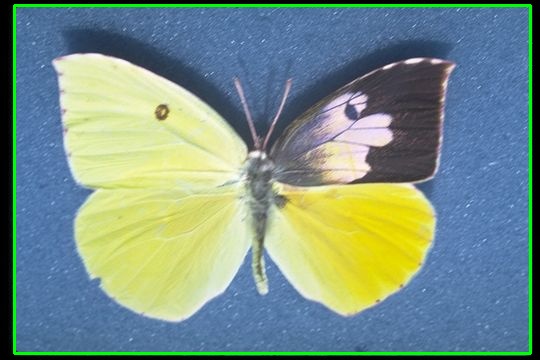1- compute Laplacian of image .
2 - compute horizontal & vertical projection
3 - evaluation of changes in both directions.
4 - finx the maximum peak Find in the side of the gradient image.
#include <cv.h>
#include <highgui.h>
using namespace cv;
Rect deleteBorder(InputArray _src,int size){
Mat src = _src.getMat();
Mat sbl_x, sbl_y;
int ksize = 2 * size + 1;
Sobel(src, sbl_x, CV_32FC1, 2, 0, ksize);
Sobel(src, sbl_y, CV_32FC1, 0, 2, ksize);
Mat sum_img = sbl_x + sbl_y;
Mat gray;
normalize(sum_img, gray, 0, 255, CV_MINMAX, CV_8UC1);
Mat row_proj, col_proj;
reduce(gray, row_proj, 1, CV_REDUCE_AVG, CV_8UC1);
reduce(gray, col_proj, 0, CV_REDUCE_AVG, CV_8UC1);
Sobel(row_proj, row_proj, CV_8UC1, 0, 2, 3);
Sobel(col_proj, col_proj, CV_8UC1, 2, 0, 3);
Point peak_pos;
int half_pos = row_proj.total() / 2;
Rect result;
minMaxLoc(row_proj(Range(0,half_pos), Range(0, 1)), 0, 0, 0, &peak_pos);
result.y = peak_pos.y;
minMaxLoc(row_proj(Range(half_pos, row_proj.total()), Range(0, 1)), 0, 0, 0, &peak_pos);
result.height = (peak_pos.y + half_pos - result.y);
half_pos = col_proj.total() / 2;
minMaxLoc(col_proj(Range(0, 1), Range(0, half_pos)), 0, 0, 0, &peak_pos);
result.x = peak_pos.x;
minMaxLoc(col_proj(Range(0, 1), Range(half_pos, col_proj.total())), 0, 0, 0, &peak_pos);
result.width = (peak_pos.x + half_pos - result.x);
return result;
}
int _tmain(int argc, _TCHAR* argv[])
{
Mat img = imread("d:/12.jpg", 1);
Mat gray_img;
cvtColor(img, gray_img, CV_BGR2GRAY);
Rect r = deleteBorder(gray_img, 2);
Mat color_img;
rectangle(img, r, CV_RGB(0, 255, 0), 2);
imshow("result", img);
waitKey(0);
return 0;
}













